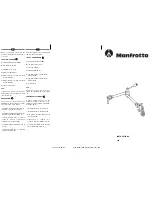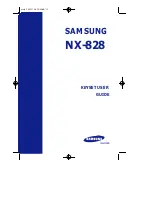
6
SPECIFICATIONS
Type
General purpose
High precision
Model No.
(Note 2)
HG-S1010-AC
HG-S1110-AC
With no seal cap
mounted
With no seal cap
mounted
Position detection method
Optical absolute linear encoder method
Measurement range
10mm (Note 3)
Stroke
10.5mm or more (Note 3)
Measuring
force
(Note 4)
Downward mount
(Note 5)
(Note 5)
(Note 5)
(Note 5)
Upward mount
(Note 5)
(Note 5)
(Note 5)
(Note 5)
Side mount
(Note 5)
(Note 5)
(Note 5)
(Note 5)
Resolution
0.5
μ
m
0.1
μ
m
Sampling cycle
1ms
Indication
accuracy
(P-P)
Full range
ȝPRUOHVV
ȝPRUOHVV
Limited range
ȝPRUOHVVDQ\ȝP
ȝPRUOHVVDQ\ȝP
Operation indicator
Equipped (2-color LED: Orange, green)
Working pressure range
0.14 to 0.16MPa
0.035 to
0.045MPa
0.14 to 0.16MPa
0.035 to
0.045MPa
Capacity to resist pressure
0.2MPa
8VDEOHÀXLG
Dry air (Dew point temperature: -10°C or lower)
Applicable tube
Outside diameter: 4mm / Inside diameter: 2.5mm
Protective structure (Note 6)
IP67(IEC)
ņ
IP67(IEC)
ņ
Contamination level
2
Elevation
2,000m or lower (Note 8)
Mechanical life (Note 7)
30 million times or more (typical value)
Tip deviation amount
ȝPW\SLFDOYDOXH
Grounding method
Capacitor grounding
Insulation resistance
0ȍRUPRUHDW9'&
Hot swap function
Incorporated
Ambient temperature
-10 to +55°C (No dew condensation or icing allowed), Storage: -20 to +60°C
Ambient humidity
35 to 85% RH, Storage: 35 to 85% RH
Material
Body: Zinc, Holder: Stainless steel, Spindle: Tool steel, Probe: Ceramic (Note 9)
Weight (main unit only)
Approx. 80g
1RWHV0HDVXUHGDWDQDPELHQWWHPSHUDWXUHRI&XQOHVVRWKHUZLVHVSHFL¿HG
2)
Connect
an
HG-S
series controller (manufactured in or after February 2019).
3) The position that represents "0" as an absolute value is a position where the spindle is pushed further down
from the bottom dead point by 0.1mm or more. The term "stroke" indicates the total stroke length from the
bottom dead point to the top dead point.
4) Measuring force changes with the air pressure used. Removing the seal cap enables the product to be used
as the low measuring force type. For details on how to remove the seal cap, refer to "
8
MAINTENANCE
".
5) For the relationship between supplied air pressure and measuring force or between measuring force and
SXVKHGVSLQGOHSRVLWLRQVHHWKH¿JXUHVEHORZ)RUXSZDUGPRXQWZLWKRXWDVHDOFDSVXEWUDFW1IURPWKH
PHDVXULQJIRUFH)RUVLGHPRXQWVXEWUDFW1IURPWKHPHDVXULQJIRUFH7KHIROORZLQJ¿JXUHVDUHRQO\W\SL
-
FDOH[DPSOHVDQGWKHVHUHODWLRQVKLSVGLႇHUGHSHQGLQJRQWKHDVVHPEO\DFFXUDF\RIWKHSURGXFWRUWKHDEUD
-
sion status of sealing materials.
Ɣ
When no seal cap is mounted
Pushed spindle position [mm]
Measuring force [N]
<Downward mount (typical example)>
<Side mount (typical example)>
Pushed spindle position [mm]
Measuring force [N]
<Upward mount (typical example)>
Pushed spindle position [mm]
Measuring force [N]
<Downward mount (typical example)>
Measuring force [N]
Pushed spindle position [mm]
6) Protective structure is not applicable when the sealing portions have deteriorated or become damaged. The
protection level is zero when the seal cap is removed.
7) Typical value in a clean environment with no contact with dust or liquids such as water and oil.
The sealing material (O-ring) for the seal cap must be replaced at appropriate intervals. For approximate re-
placement intervals, refer to "How to replace the seal cap" in "
8
MAINTENANCE
".
8) Do not use or store this product in environments where ambient air is pressurized to an air pressure higher
than the atmospheric pressure at an altitude of 0 m.
9) The probe is also available as an option.
7
CAUTIONS
The special sensor head
HG-S
Ƒ LV GHVLJQHG WR EH XVHG ZLWK WKH FRQWUROOHU
HG-SC
Ƒ,IXVHGZLWKRWKHUWKDQWKHVSHFLDOVHQVRUFRQWUROOHURSWLRQWKHVSHFL¿FD
-
tions will not be met and product malfunctioning or damage may occur.
Ɣ
This device has been developed / produced for industrial use only.
Ɣ 'RQRWXVHWKLVSURGXFWRXWVLGHWKHUDQJHRIWKHVSHFL¿FDWLRQV5LVNRIDQDFFLGHQW
and product damage. There is also a risk of a noticeable reduction of service life.
Ɣ
Deviations may occur in the measured value at the bottom dead point. Do not use
the bottom dead point as a reference. The position where the spindle is pushed
further down from the bottom dead point by 0.1mm or more must be used as the
reference point.
Ɣ
Do not wire in parallel with a high-voltage line or power line, or run through the
same conduit. Risk malfunctioning due to induction.
Ɣ
Do not use the product during the initial transient time after the special controller
HG-SC
ƑLVWXUQHG21
Ɣ
Do not apply stress such as excessive bending or pulling to the extracted part of a
cable.
Ɣ
When attaching the sensor head connection cable to this product, do not apply
force to the product.
Ɣ
Only one joint (optional) can be installed to one sensor head.
Ɣ
This product is suitable for indoor use only.
Ɣ
Avoid dust, dirt, and steam.
Ɣ
Do not use this sensor in places where it may come in contact with corrosive gas-
es, ozone, or other harmful gases.
Ɣ
Ensure that the product does not come into contact with organic solvents such as
thinner.
Ɣ
Ensure that the product does not come into contact with strong acid or alkaline.
Ɣ
Ensure that the product does not come into contact with oil or grease.
Ɣ
7KLVSURGXFWFDQQRWEHXVHGLQDQHQYLURQPHQWFRQWDLQLQJÀDPPDEOHRUH[SORVLYHJDVHV
Ɣ 3HUIRUPDQFHPD\QRWEHVDWLVIDFWRU\LQDVWURQJHOHFWURPDJQHWLF¿HOG
Ɣ
This product is a precision device. Do not drop or otherwise subject to shock. Risk
of product damage.
Ɣ
Mount the sensor unit perpendicular to the measured surface. Mounting the sen-
VRUXQLWREOLTXHO\PD\QRWRQO\UHVXOWLQPHDVXUHPHQWHUURUEXWDOVRVLJQL¿FDQWO\
shorten its service life.
Ɣ
Do not allow excessive horizontal force to be applied to the spindle.This may
cause reduced accuracy and durability.
Ɣ
Mount a pressure-reducing valve to use the product within the allowable working
pressure range. Excessive pressure may result in failure or damage.
Ɣ
Do not use air containing foreign objects (such as carbon powder or dust), water,
or oil. Doing so may result in electric shock or failure. To prevent such problems,
WDNHDSSURSULDWHPHDVXUHVVXFKDVPRXQWLQJDLU¿OWHUVRUPLVWVHSDUDWRUV
Ɣ %HIRUHSHUIRUPLQJPDLQWHQDQFHLQVSHFWLRQRUFOHDQLQJDOZD\VVKXWRႇDLUVXSSO\
completely and check that the pressure inside the product and piping is zero. Fail-
ure to do so may result in accidents or failures due to air pressure.
Ɣ
When the product becomes unusable or unneeded, dispose of the product appro-
priately as industrial waste.
Ɣ
Never attempt to disassemble, repair, or modify the product.
8
MAINTENANCE
How to replace the probe
Ɣ
Always secure the spindle to prevent rotation before replacing the probe. Risk of
product damage if an excessive torque (0.2N·m or more) is applied to the spindle.
Ɣ
If the seal cap is scratched or damaged during probe replacement, the
VSHFL¿FDWLRQVRIWKHSURWHFWLYHVWUXFWXUHPD\QRWEHVDWLV¿HG
1.
Turn the probe screw in the direction of the arrow and remove the probe from the
spindle. When turning the probe screw, hold the cut face of the spindle with the
provided sensor head fastening wrench to prevent the spindle from turning.
Hold the sensor head fastening wrench in place, and turn only the probe.
Sensor head
fastening wrench
(Accessory)
Probe
Turn
2.
Attach the new probe to the spindle. The tightening
torque should be 0.4N·m or less. Make sure that the
probe does not come OFF.
When turning the probe screw, hold the cut face of the
spindle with the provided sensor head fastening wrench
to prevent the spindle from turning.
Hold the sensor head fastening wrench in place, and
turn only the probe.
Turn
How to replace the seal cap
Replace the seal cap at appropriate intervals according to the deterioration status of
the sealing material.
Replace the seal cap when the number of sliding operations reaches approximately
¿YHPLOOLRQ
Ɣ
When removing or mounting the seal cap, always remove the product from the
housing.
Ɣ
When removing or mounting the seal cap, stop supplying air.
Ɣ
To prevent problems, replace the seal cap before the internal O-ring becomes
worn.
How to remove
1.
Remove the probe.
2.
While pulling the seal cap, expose the
edge of the O-ring.
3.
Loosen the seal cap by rotating it in the
direction indicated by the arrow.
4.
After loosening the seal cap completely,
pull it out.
5.
Finally, remove the O-ring.
Seal cap
O-ring
How to mount
1.
Mount the O-ring in the specified posi-
tion.
2.
Slide the seal cap onto the spindle and
move it to a position where it can rotate
at no load.
3.
Push in the seal cap while rotating it in
the direction indicated by the arrow.
Note: Check that the O-ring does not protrude.
Seal cap
O-ring
Panasonic Industrial Devices SUNX Co., Ltd.
https://panasonic.net/id/pidsx/global
Please visit our website for inquiries and about our sales network.
PRINTED IN JAPAN
© Panasonic Industrial Devices SUNX Co., Ltd. 2020




















